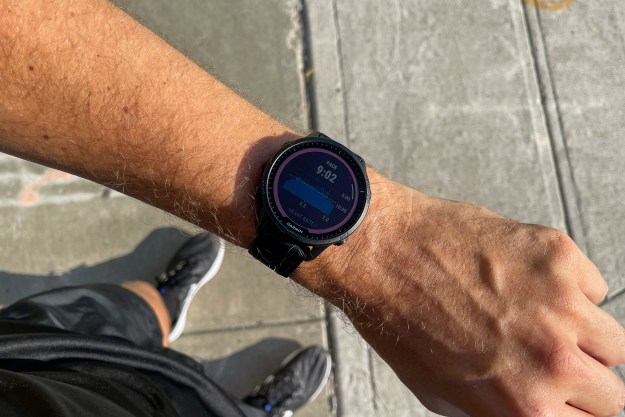At any given moment, there are approximately a zillion crowdfunding campaigns on the web. Take a stroll through Kickstarter or Indiegogo and you’ll find no shortage of weird, useless, and downright stupid projects out there — alongside some real gems. In this column, we cut through all the worthless wearables and Oculus Rift ripoffs to round up the week’s most unusual, ambitious, and exciting projects. But don’t grab your wallet just yet. Keep in mind that any crowdfunded project can fail — even the most well-intentioned. Do your homework before cutting a check for the gadget of your dreams.
Hitch Theater — Car-mounted drive-in movie screen
Getting the family in the car and heading off to the drive-in to catch a movie might seem downright archaic in our 21st century, Netflix-dominated lives. But if Salt Lake City-based inventor Joe Livingston of Hitch Theaters has his way, drive-in movies might soon make a glorious comeback — on the back of your car. Livingston’s portable projection screen, the Hitch Theater, can be set up using the hitch on your truck (thus the name). A projector stand is then placed on the roof of the truck or behind the vehicle. In effect, it’s basically a portable movie theater.
Everything in the entire kit (the frame, the guylines, the screen, etc) folds down into a neat little package when its not in use — which Hitch Theaters hopes to use as a selling point. “It packs down into a bag that is about four feet long by 13 inches wide, and 6 inches high,” Livingston told DT. “That’s about the size of a larger foldable camping chair, and small enough to store into the trunk of a car.”
BioLite BaseLantern — Slim, bright, lightweight lantern
BioLite originally won the hearts of the outdoor community with its gadget-charging, biomass-burning CampStove, but in the past few months, the company has really begun to branch out and expand its product offerings. And for its latest product — a slim, lightweight, and incredibly efficient backpacking lantern– the company has turned to Kickstarter.
The BaseLantern, as its called, is a 500-lumen, flat-packing LED lantern that doubles as a portable power source. The lantern’s internal battery can do handy things like charge your phone or top off your GoPro for the next day’s adventure, but even as just a lighting solution, the lantern also packs a few smart tricks that set it apart. With the Bluetooth LE-connected smartphone app, campers can adjust the lantern’s color and lighting temperature, or check the check battery status and power analytics to see how much juice is left before everything goes dark. The killer feature, though? Proximity activation for those times when you’re stumbling out of your tent in the dark, looking for a place to pee.
Portal — Wide spectrum Wi-Fi router
Wi-Fi routers have come a long way in the past decade, but regardless of how advanced all these crazy new tri-band 802.11ac gigabit beamforming routers have become, they all still suffer from the same drawbacks — they simply don’t handle traffic and congestion very well. The problem is that while the number of internet-connected devices in our homes continues to grow, the number of frequencies that our routers operate on has remained the same. Even if you’ve got the most advanced router in the known universe, all your data is still funneled through the 5.0 and 2.4 gigahertz frequency bands.
Portal offers a simple solution to this problem. Instead of trying to jam more traffic onto an already congested two-lane freeway, Portal opens up a few new lanes. In addition to the 2.4 and 5gHz frequency bands, the router also operates on five additional bands that were previously reserved for weather radar systems. This effectively gives you seven different lanes to drive in instead of just two — so congestion and traffic aren’t so much of an issue.
Blips — Ultrathin micro/macro smartphone photography lenses
Aftermarket smartphone camera lenses are a dime a dozen these days. Take a quick scroll through Amazon and you’ll find there’s a
That’s where Blips come in. These nifty little lenses are designed to work with practically any smartphone on the market –regardless of the phone’s size, thickness, or the position of its camera. Instead of a clip-on configuration, Blips are affixed to your phone with a flexible, stretchable adhesive strip, which allows you complete freedom when it comes to placement. And the best part? They’re outrageously cheap. Because Blips are made from simple materials, they only cost about $10 each — and if you’re bold enough to back them on Kickstarer, you can get your hands on them for even less.
Ample — Meal-replacement shake
You know Soylent? The company that makes those weird meal replacement shakes that contain one third of the daily recommended values for every nutrient your body needs? Well, you might not realize it, but Soylent isn’t the only player in the meal-replacement shake game. Ever since the company gained widespread popularity, dozens of smaller startups have sprung up to steal its thunder, offering better shakes made from better ingredients.
Ample is the latest such startup, and the company’s eponymous product seems to carry a number of big advantages. In addition to a full suite of vitamins and minerals, Ample’s shakes also contain probiotics that supposedly support healthy gut bacteria, fewer carbohydrates, and more protein. On top of that, the shakes are made almost entirely from real food ingredients — many of which are organic. So basically, it’s like Soylent for the Whole Foods crowd.




